Sales prospecting is a critical function in any sales-driven business. In today’s market, the ability to effectively identify and engage potential clients can significantly influence a company’s success. This article aims to explain the question ‘what is sales prospecting’ as well as providing a sales prospecting definition; we’ll explore key concepts, define essential terms, and differentiate between various prospecting methods.
What is Sales Prospecting?
Sales prospecting is the process of identifying potential customers or clients (known as prospects) who are likely to benefit from your products or services. This involves researching, contacting, and nurturing these prospects to move them through the sales funnel towards a purchasing decision. Effective sales prospecting is about more than just generating leads; it’s about finding and qualifying prospects who have a genuine need for what you offer and the authority and motivation to make purchasing decisions.
The ultimate goal is to build relationships and establish trust, positioning your services as the solution to their needs.
The Difference Between Leads and Prospects
Now that we’ve answered the question, ‘what is sales prospecting’ it’s time to understand the difference between leads and prospects. This is fundamental for effective sales prospecting, and while the terms are often used interchangeably, they represent distinct stages in the sales process.
Leads are individuals or businesses that have shown interest in your product or service, typically through some kind of engagement, such as filling out a form on your website, subscribing to a newsletter, or attending a webinar. However, leads are not yet qualified; they may not have a genuine need for your service or the authority to make a purchase decision.
A prospect, on the other hand, is an umbrella term which refers to a contact associated with a lead, appointment, or general sales opportunity. Prospects have a demonstrated need for your services, but you may not have fully qualified the opportunity and need to understand if they have the budget to afford your solution, and the decision-making power to move forward with a purchase.
To delve more into the difference between leads and prospects read our article, What Makes a Lead Sales Ready?
B2B vs. B2C Prospecting
Sales prospecting can be broadly categorised into two main types: Business-to-Business (B2B) and Business-to-Consumer (B2C). While the fundamental goal of identifying and engaging potential customers stays the same, the strategies and approaches differ significantly between these two audience types. Understanding these differences is crucial for tailoring your prospecting efforts to achieve the best results.
B2B Prospecting
B2B prospecting involves identifying and engaging with businesses that might benefit from your products or services. B2B sales cycles are typically longer and more complex, involving multiple decision-makers and a higher level of customisation.
Key Characteristics of B2B Prospecting:
- B2B transactions often involve significant investment and multiple stages of approval, leading to longer sales cycles. This requires persistent follow-up and relationship building.
- B2B sales usually involve various stakeholders, including managers, directors, and executives. Effective prospecting must address the needs and concerns of all these parties.
- B2B buyers expect solutions tailored to their specific needs. Personalised outreach and customised solutions are crucial to success.
- B2B buyers are focused on the return on investment (ROI) and long-term benefits. Prospecting efforts should highlight how your services can solve specific problems and add value.
Strategies for Effective B2B Prospecting:
- Thoroughly research target companies to understand their needs, challenges, and decision-making processes. Tools like LinkedIn, industry reports, and company websites can provide valuable insights.
- Account-Based Marketing involves targeting specific accounts with tailored marketing and sales efforts. This highly personalised approach is effective in B2B settings.
- Establish your company as a thought leader in their space by sharing valuable content, such as whitepapers, case studies, and industry insights. This builds credibility and attracts potential prospects.
B2C Prospecting
B2C prospecting focuses on reaching individual consumers who might be interested in your products or services. B2C sales cycles are generally shorter and involve fewer decision-makers.
Key Characteristics of B2C Prospecting:
- B2C transactions tend to be quicker, as they often involve impulse decisions or immediate needs. Speed and efficiency are crucial!
- In B2C, the consumer is usually the sole decision-maker. This simplifies the sales process but requires a strong understanding of consumer behaviour.
- B2C prospecting often leverages emotional triggers, focusing on how the product or service can improve the consumer’s life or solve a problem.
- B2C prospecting typically involves reaching a larger audience through mass marketing tactics, such as social media advertising, email campaigns, and SEO.
Strategies for Effective B2C Prospecting:
- Segment your audience based on demographics, behaviour, and interests. Tailor your messaging to resonate with each segment.
- Emails, recommendations, and offers can significantly increase engagement!
- Leverage social media platforms to connect with potential customers. Regularly post engaging content and interact with your audience to build a community around your brand.
Comparing B2C and B2B Prospecting
While both B2C and B2B prospecting aim to identify and convert potential customers, the tactics and focuses differ based on the nature of the target audience.
Complexity and Decision-Making:
B2B prospecting involves more complex sales processes with multiple stakeholders, requiring detailed, value-driven communication, whereas B2C prospecting is generally simpler, focusing on quick conversions and appealing to individual consumer needs and emotions.
B2B sales cycles tend to be longer, necessitating sustained engagement and relationship building. A B2C sales cycle, on the other hand, is usually shorter, often driven by immediate consumer needs and desires.
Personalisation and Customisation:
B2B prospecting demands highly personalised and customised approaches to meet the specific needs of each business. B2C prospecting also benefits from personalisation but typically at a higher volume and broader reach.
So now that you know how to prospect for sales for both B2B and B2C audiences, it’s time to understand exactly why sales prospecting is so important, and how sales prospecting can help your business!
Why is Sales Prospecting Important?
It’s simple: Sales prospecting is vital for maintaining a steady pipeline of potential clients, ensuring continuous business growth. Here are several reasons why it is crucial:
Pipeline Development
Consistent prospecting ensures that your sales pipeline remains full, providing a steady flow of opportunities to convert into sales.
Targeted Marketing
By identifying and focusing on high-quality prospects, sales teams can tailor their marketing efforts more effectively, leading to higher conversion rates. This precision is especially beneficial in niche markets.
Efficiency
Effective prospecting helps prioritise efforts on those most likely to convert, reducing the time and resources spent on unqualified leads. This efficiency can significantly impact the bottom line, allowing for better allocation of resources.
Competitive Advantage
In a competitive market, having a robust sales prospecting strategy can set your company apart, ensuring you are the first to engage with potential clients or candidates.
According to HubSpot, companies that excel at lead nurturing generate 50% more sales-ready leads at a 33% lower cost. This statistic highlights the importance of a well-executed sales prospecting strategy in achieving cost-effective growth.
Inbound vs Outbound Sales Prospecting
A Sales prospecting strategy generally falls into two categories: inbound and outbound. Each approach has its advantages and can be effective depending on the context and goals of your sales efforts.
Inbound Sales Prospecting
Inbound sales prospecting focuses on attracting prospects to your business through valuable content and experiences tailored to their needs. This method leverages content marketing, SEO, social media, and other digital marketing tactics to draw in potential customers who are actively seeking solutions to their problems.
Advantages of Inbound Prospecting:
- Higher Engagement: Prospects who find you through inbound methods are often more engaged and informed, making them easier to convert.
- Cost-Effective: An inbound sales prospecting strategy can be more cost-effective over time, as they leverage content and automation to attract prospects.
- Brand Authority: By providing valuable content, you can establish your company as an authority in your field, building trust with your audience.
Disadvantages of Inbound Prospecting:
- Time-Consuming: Building a robust inbound strategy takes time and consistent effort.
- Passive Approach: Inbound relies on prospects finding you, which may not always align with your sales goals or timelines.
Outbound Sales Prospecting
Outbound sales prospecting involves proactively reaching out to potential prospects through methods such as cold calling, email outreach, and direct mail. This approach is about taking the initiative to contact prospects who may not yet be aware of your services.
Advantages of Outbound Prospecting:
- Immediate Results: Outbound efforts can yield faster results compared to the often slower inbound process.
- Control: You have more control over the sales process, allowing you to directly target specific companies or individuals.
- Scalability: Outbound tactics can be easily scaled with the right resources and tools.
Disadvantages of Outbound Prospecting:
- Higher Costs: Outbound methods can be more expensive due to the resources required for direct outreach.
- Lower Engagement: Prospects contacted via outbound methods may be less engaged and harder to convert.
Combining Inbound and Outbound Strategies
For the best results, many successful sales teams combine both inbound and outbound sales prospecting strategies. This hybrid approach allows companies to maximise their reach and effectiveness, leveraging the strengths of each method.
Best Practices for Effective Sales Prospecting
To optimise your sales prospecting efforts, consider the following best practices:
- Use a CRM System: A Customer Relationship Management (CRM) system can help track interactions with prospects, manage follow-ups, and analyse the effectiveness of your strategies.
- Personalise Your Outreach: Tailor your messages to address the specific needs and pain points of each prospect. Personalised communication is more likely to resonate and lead to a positive response.
- Leverage Data and Analytics: Use data to identify patterns and trends in your prospecting efforts. Analytics can help you understand which tactics are working and where there is room for improvement.
- Stay Consistent: Consistency is key in prospecting. Regular, planned outreach efforts are more effective than sporadic attempts.
- Follow Up: Effective follow-up is crucial. Many sales are made after multiple touchpoints, so ensure you have a system in place to track and execute follow-ups.
- Continuous Learning: Stay updated with the latest trends and techniques in sales prospecting. Attend industry conferences, webinars, and training sessions to continually improve your skills.
Sales prospecting is a foundational element of a successful sales strategy. By understanding the nuances of this process, understanding the difference between leads and prospects, and employing a balanced approach of inbound and outbound strategies, your company can enhance its ability to attract and convert high-quality prospects.
At Fast Track Solutions, we offer permission-led and ROI-focused Sales Prospecting, meaning you get the most value out of Lead Generation, Appointment Setting, and Account-Based Marketing activity. With a proven track record of success, we have honed our expertise in sales prospecting and offer a range of services tailored to solutions providers targeting senior decision makers.
Clients have even reported that our approach has helped them secure new accounts which are significantly more profitable than their traditional customer base! Get in touch with us today to find out more.





